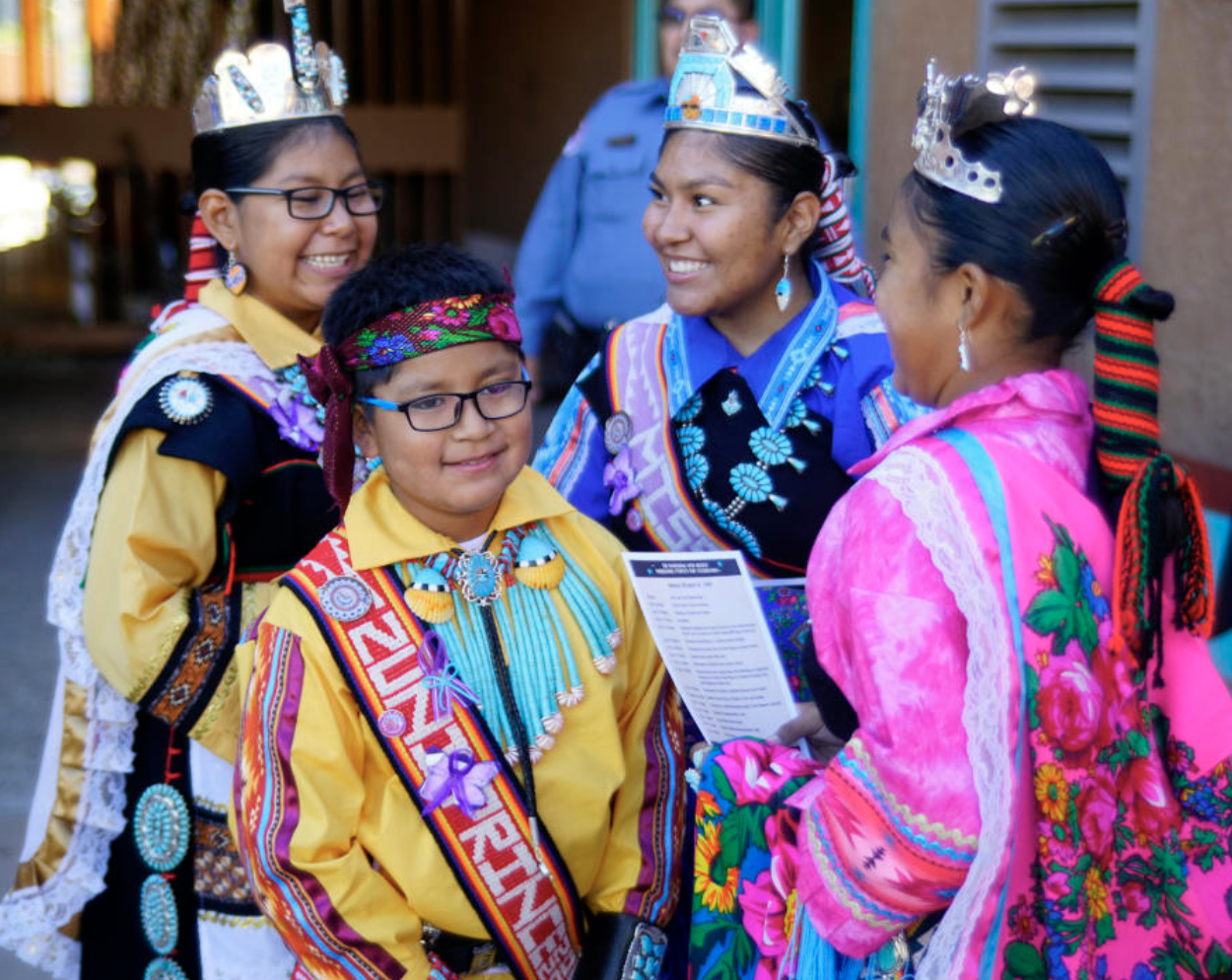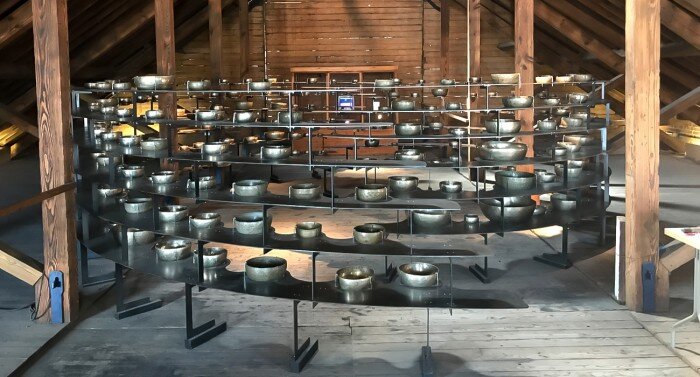The Need for Long Vision
I want to share an essay originally posted several years ago, as an homage to Indigenous People’s Day. People occasionally ask me why I am so invested in Native American issues, when I am not actually Native American. My answer is: why not, if I can help to address injustice, correct historical inaccuracies, and bring awareness and appreciation for diverse cultural contributions?
Yet, there’s another reason, which is foundational: As a nation, and a world, we should take the opportunity to reacquaint ourselves with various Native American sensibilities. They’re deeply rooted in culture and viewpoint, but have been all but lost to all but a few.
In honor of Indigenous People’s Day, I thought I’d bring up a cultural perspective long held by the Laguna Pueblo tribe in New Mexico, shared by an avant guarde musician in London–an ability to look at the world with “long vision.”
I think you will find that this is a unique and authentic kind of wisdom, worthy of deep consideration, and an example of Native American sensibilities to be celebrated and cherished. I say we bring back both the ancient and modern expressions of this wisdom so that we can all grow, both individually, and as a community.
“I can trace my family history back at least thirty-five generations,” says now Secretary of the Interior, Deb Haaland (Formerly Congresswoman; D - New Mexico). Haaland and Kansas senator Sharice Davids share the distinction of being the first Native American people elected to the U.S. House of Representatives (2018).
Haaland is a member of the Laguna Pueblo tribe, which has lived on the same land for at least one thousand years.
That is, before the pilgrims… before Christopher Columbus… before Leif Erikson.
The string of Haaland’s history and genealogy stretches back at least this far back in time.
It is not hard to imagine then, that her vision of the next chapter of history would stretch at least one thousand years into the future as well.
***
Playing the Long Game
Another with the sight of long vision sits at the Canary Wharf docks on the Thames River in London. One very unusual musical installation called: the “Longplayer.” It began playing at midnight on the 31st of December in 1999 and will continue to play without repetition until the last minute of 2099. You can listen to its livestream here. This is an instrument and a work of art meant to last generations longer than any of us. “What’s the point?”, you may ask. Why would anyone spend their time creating and supporting this?
These are the most short-sighted of times. Our societies, tastes, and economies are not at all built to last, but to be disposed of and replaced. This era is defined by change, sculpting our viewpoints to accommodate what we see as an inevitable shift. Nothing lasts forever. A binary world pits tomorrow against forever, with a dash in between–“tomorrow-forever”. The problem with this is that there is a lot of space contained within that dash. Here’s where the need for long vision comes in.
***
Secretary of the Interior Deb Haaland is a living example of someone whose culture has survived the worst and lived, right here in America, for one thousand years or more. There are many reasons why the Laguna Pueblo people may have been able to achieve this incredible cultural feat, but part of the reason is that they have designed their living, livelihood, eco-system, and community to last.
It would be interesting to ask them how they believe they did it. In addition to a sheer determination to survive, I suspect their answers would revolve around balance, community support, moderation, respect for the land, and a belief in something larger than themselves. These are all hallmarks of sustainability.
Is that what Longplayer is about?
Surely the inventor is not just trying to prove that one song can be played for a hundred years. I have sat through a few concerts that felt like they might go on for a hundred years, so surely this is not such a worthy goal.
Instead, maybe the long-term impact of Longplayer is to stretch our perspective and imagination in the same way that the Laguna people do. We have this notion of how long a piece of music should last.
Where Long Vision Leads You
Another question for one’s imagination: what is a composition? Is it a pre-written piece which is later performed? Or maybe it’s improv–made up on-the-spot? In any event, it’s conceived and performed by human beings, right?
Longplayer follows none of these rules. Even the notion of what is an instrument, how long it should play, and who “makes” that instrument is challenged by Longplayer, because the music it creates is designed to change and evolve as time goes on.
Neither the music nor the instrument playing one hundred years from now will be the same as what plays today. The very thought of this stretches not only my imagination, but my comprehension of reality.
This “stretch” of the imagination is an essential feature of long vision.
Long vision is about being forced out of your comfort zone, made to reconsider your assumptions and linear projections. Just as you should stretch your muscles to gain speed, agility, and strength, so it should be with your vision and imagination.
I am convinced that the future will not be a linear projection from the present. There will be gaps and leaps, fits and starts, rather than just an accumulation of past action.
Our real future will not be that common illusion of the past endlessly repeating itself, time and again.
Long vision is an exercise designed to expel that fallacy.
***
Planting a Legacy
Is long vision a waste of time, time better spent addressing the immediate needs of the short term? The effect of long vision on your day-to-day life is surprising. It’s hard to be transactional when practicing long vision.
Our society, like the algorithms of our social media, encourages instant gratification. This is an individual, societal, and global mass addiction; by design and baked in. One of the main effects of this mass addiction is the extreme prevalence of impatience in our world.
I feel impatient all the time, with all sorts of things. Living in a world which promises instant answers, instant solutions, and instant gratification cannot be healthy—individually or collectively.
Long vision, by its very nature, demands delayed gratification. Would something be valuable if you had to wait 20 years to see it come to fruition? It certainly would be.
When we plant a tree, we must wait for it to grow. Contemplating when might be the best time to plant a tree is an exercise in long vision. For the impatient, it’s always better to have had somebody plant the tree 20 years ago, so you can amble on scene and just enjoy the shade.
Long vision helps you to shift your perspective as well as your own role on the continuum. Perhaps you are not on the receiving end of the 20-year wait, but rather on the giving end.
Maybe you are the planter, without concern about whether you’re around to see the tree reach its full maturity. Will it matter? Would that stop you from planting a tree? Can you put aside your own immediate interests to contribute to something that could outlast you? I suggest our planet would be a better place if we set aside a small part of our own hearts and minds for the perspective that long vision cultivates—one that extends beyond ourselves.
This is legacy, your legacy, something you naturally pass along to future generations. Why should you spend any time doing this?
If you might like to follow the camper’s code–to leave the world a slightly better place than you found it, long vision will come in handy.
We have all become painfully aware of another piece of our collective legacy which requires our immediate and intense long vision–the effects of human activities on climate change.
This issue will not be addressed with short-term thinking, yet one of the structural issues we have as we approach the growing catastrophe is that we seem to only know how to react in a transactional, short-term manner.
The problem with that is that many of the root causes of climate change took many years to create, and will no doubt take many more years to lose momentum, then stop, before a shift in direction can happen.
Most likely, anything we do now will not show immediate benefits. We must be committed to a long-vision approach to climate change, even though we may not see any of the results of our efforts in this lifetime.
Playing it Forward
If you were to extend your long-term vision, to a thousand years, where might this lead?
What might you change today and tomorrow to lay the foundation for an educational bridge that spans a millenium?
I know, It’s a bit metaphorically heady. Nevertheless, it can be a bit alchemic as well. We can create a new long arc of history.
You don’t have to spend all of your time noodling about this, but why not give it a tiny fraction of your headspace, maybe one percent? Who knows where that could lead?
Most people only become aware of long vision toward the end of their own lives when their earthly existence suddenly seems so much more finite. Wouldn’t it be better if humans practiced long vision more like the Laguna and Longplayer, so they could see and benefit from the effects of their efforts?
That’s the irony of it all–long vision is not just about you, because many of the things you will initiate will bring you no personal benefit while you are here.
How fabulous to realize it’s not all about you!
Long vision forces you to stop bringing main character energy, and perhaps become a whirling planet around the sun of mankind’s shared imagination. It is the ultimate pay-it-forward, past the arc of your own horizon, toward futures yet untold.
Original calligraphy work, made for me by a friend.




